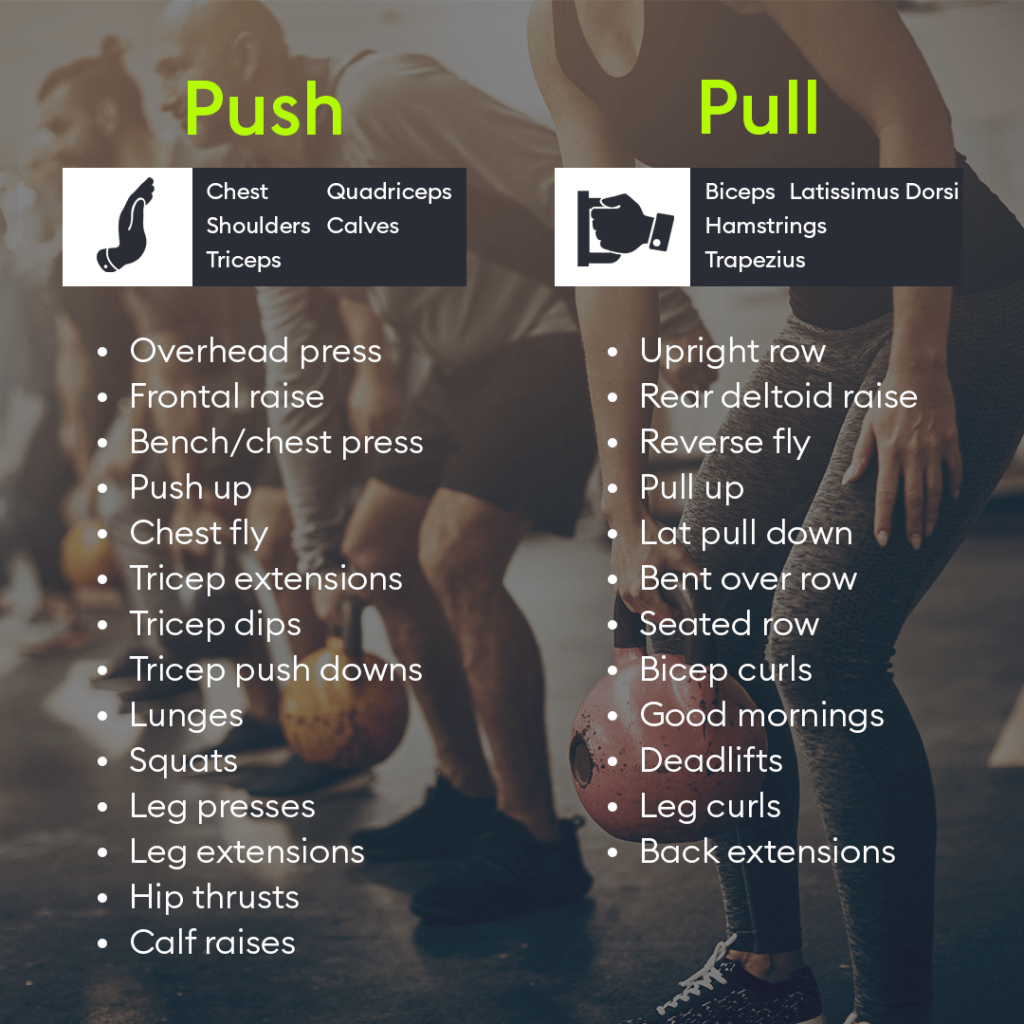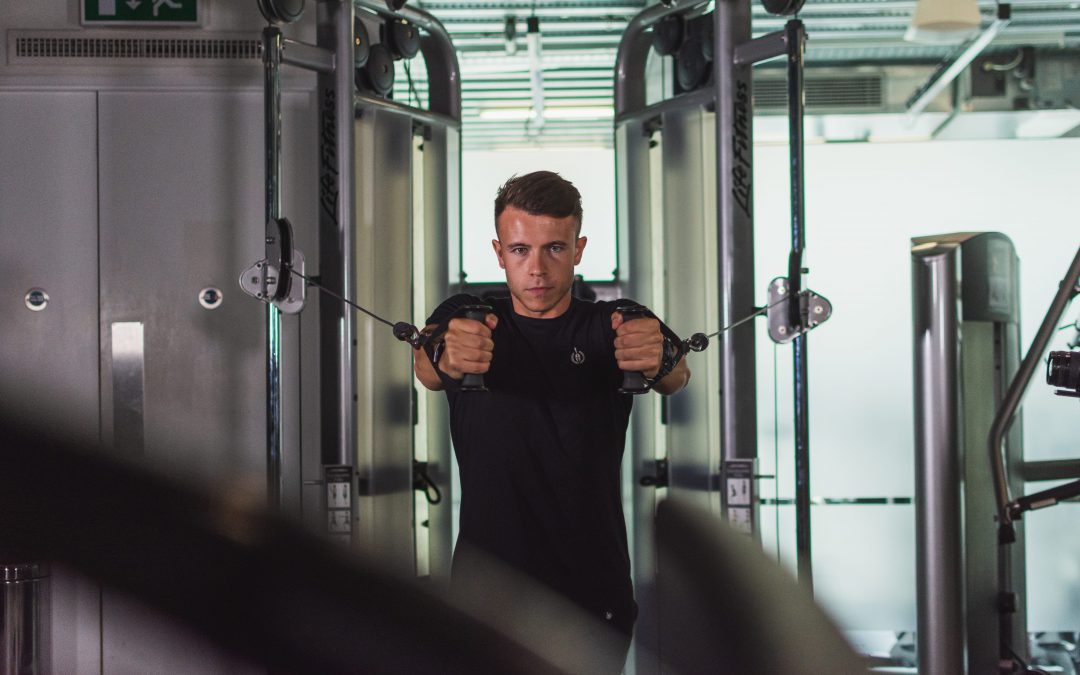When it comes to fitting fitness in, aside from a flexible pass that gives you access to thousands of gyms across the UK, it helps to have a straightforward, effective, and time-efficient workout plan. One that’s simple to follow and gives the right results.
There’s so much information around fitness that it’s tricky to know where’s worth putting all your effort. All this noise about the best exercises, diets, workout plans, and routines: there’s too much to focus on.
All you want is a plan that’s going to get you where you want to be.
Push/pull workout structures make things simple. They give you a basic guide to your weekly fitness routine. One that guarantees to work all the right muscle groups, in the right frequencies, with the right exercises, and the right amount of rest. It doesn’t need to be any more complex than that.
If you’re looking to develop full-body strength and fitness, and are done with overthinking it, here’s how the push/pull structure can help.
Are you an employer? Hussle now offer flexible, discounted access to our fitness venues as an employee benefit. Elevate employee wellbeing.
What are push/pull workouts?
Exercises can broadly be grouped as either push or pull, depending on the action performed. Because of this, muscle groups tend to be involved in either push movements or pull movements.
A push/pull workout structure segments your workouts by this movement pattern. You’ll do a pull workout. Or a push workout. Your weekly workout routine will involve scheduled days for push or pull.
By doing this, you’re grouping the major muscle groups and working them on separate days. Push/pull structures are sometimes used to plan full-body workouts, but the separation of movement actions is more specific in the upper body.
Why are push/pull workouts effective?
The muscles in the body can be paired into opposites. When one muscle contracts, the other one lengthens to allow it. These are referred to as agonist (doing the work) and antagonist (lengthening) muscles.
Think of the upper arm, for example. When your bicep muscle on the front of the upper arm contracts, the tricep on the back lengthens. For this reason, biceps and triceps are opposing muscle groups.
Push/pull exercises often follow this pattern of opposing muscle pairs, especially in the upper body. One muscle group is often (but not always) responsible for push exercises and the opposite for pull.
When you segment your workouts into push/pull structures, your fitness will benefit because:
1. You’re targeting all the major muscle groups equally
2. You get optimal rest between sessions as your pushing muscles are guaranteed recovery time on the days that you’re pulling and vice versa
3. You can be more efficient with the time you spend exercising
4. You can create simple and straight forward routines
What are push muscles?
Pushing involves move force away from the centre of the body. The major muscle groups involved in push exercises are:
1. Chest (Pectorals)
2. Shoulders (Deltoids)
3. Triceps
4. Quadriceps
5. Calves (Gastrocnemius)
What are pull muscles?
Pull involves bringing movement towards the centre of the body. The major muscle groups involved in pull exercises are:
1. Biceps
2. Back (Lats and traps)
3. Hamstrings
What does a push/pull workout structure look like?
It depends on how many times you want to workout per week, and if you’re going to include the lower body in your push/pull structure.
The lower body muscles can be categories in terms of push or pull, but it’s not as straightforward in all exercises. For example, the glutes are worked in both movement patterns. For this reason, some people prefer to dedicate a day to their legs altogether.
For 2 workouts a week:
Day 1: Full body pull
Day 2: Full body push
For 3 workouts a week:
Day 1: Upper body pull
Day 2: Upper body push
Day 3: Lower body
For 4 workouts a week:
Day 1: Full body pull
Day 2: Full body push
Day 1: Full body pull
Day 2: Full body push
Which exercises are push and pull?
Any exercise that involves your muscles shortening and lengthening can be categorised as push or pull. It’s what’s happening when that muscle contracts that decided which bucket it will fall into.
If an exercise doesn’t involve the shortening and lengthening of a muscle, like during the plank, it’s not usually described as push or pull.
To figure out whether an exercise is push or pull:
1. Acknowledge the major muscle group doing the work
2. Pinpoint at which phase of the movement that muscle is shortening
3. Figure out whether during that phase you’re pushing away from the centre of the body or pulling towards
For example, a bench press works the chest muscles. These muscles are shortening when you push the bar up away from you. This part of the movement involves pushing away from the body. It’s, therefore, a push exercise.
Here’s a list of the most common exercises in terms of push or pull:

What are the disadvantages of the push/pull structure?
As with any training structure, there are always reasons why it might not work for you.
With push/pull, the structure focuses mainly on the upper body. Although it does apply to the lower body, there are some muscle groups involved in both push and pull exercises. The glutes, for example, are engaged in lower body moves such as lunges, squats, and deadlifts. By training alternate days for push/pull, you can easily end up overtraining your glutes and working them every day. For this reason, many people adopt a push, pull, legs structure instead.
However, having two upper body days and only one lower body day per week doesn’t align with some people’s fitness goals. If you’re looking to develop strength and endurance in your legs, you’ll probably want to train your legs a bit more. In this case, an upper body push, legs, upper body pull, legs structure could work, but four days might be a bit much for some people.
The push/pull structure is a helpful way to craft an effective workout routine; it’s just about moulding it in a way that suits your fitness goals.



